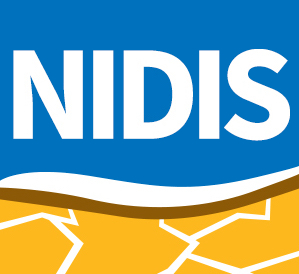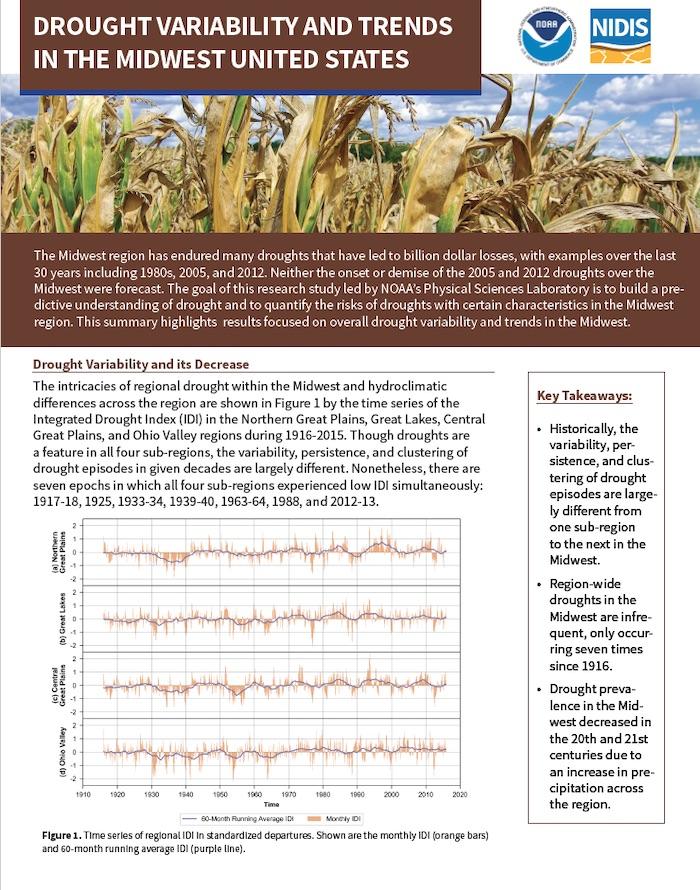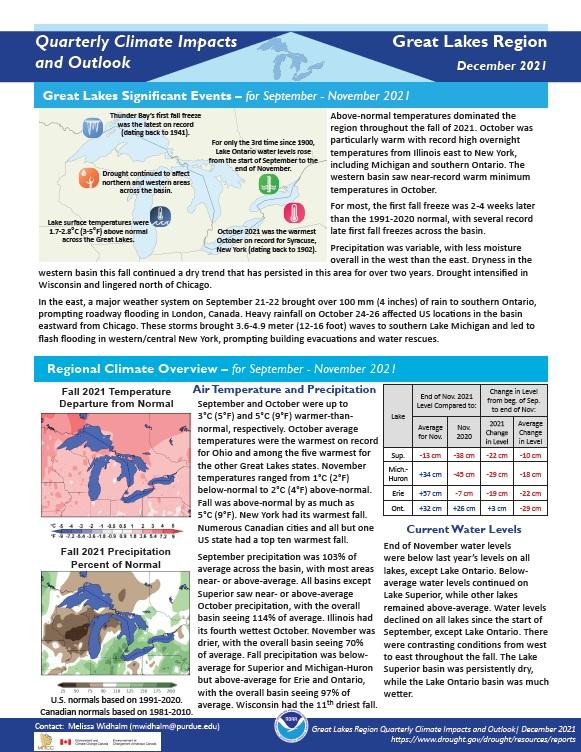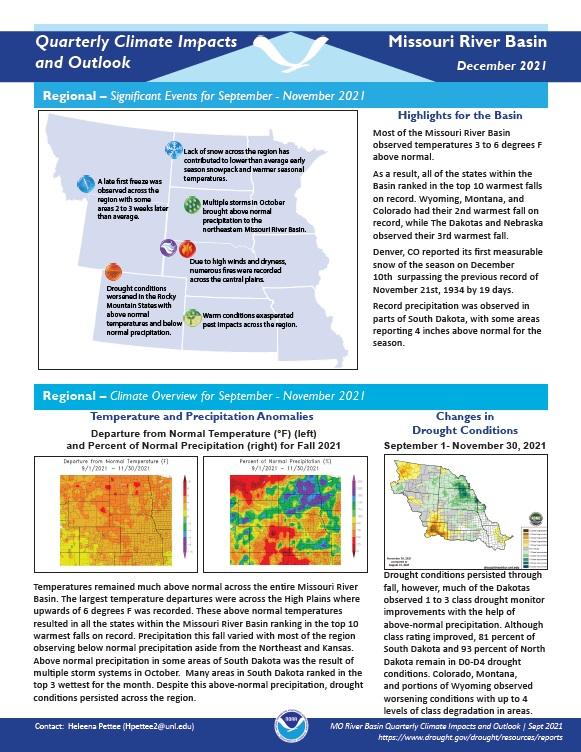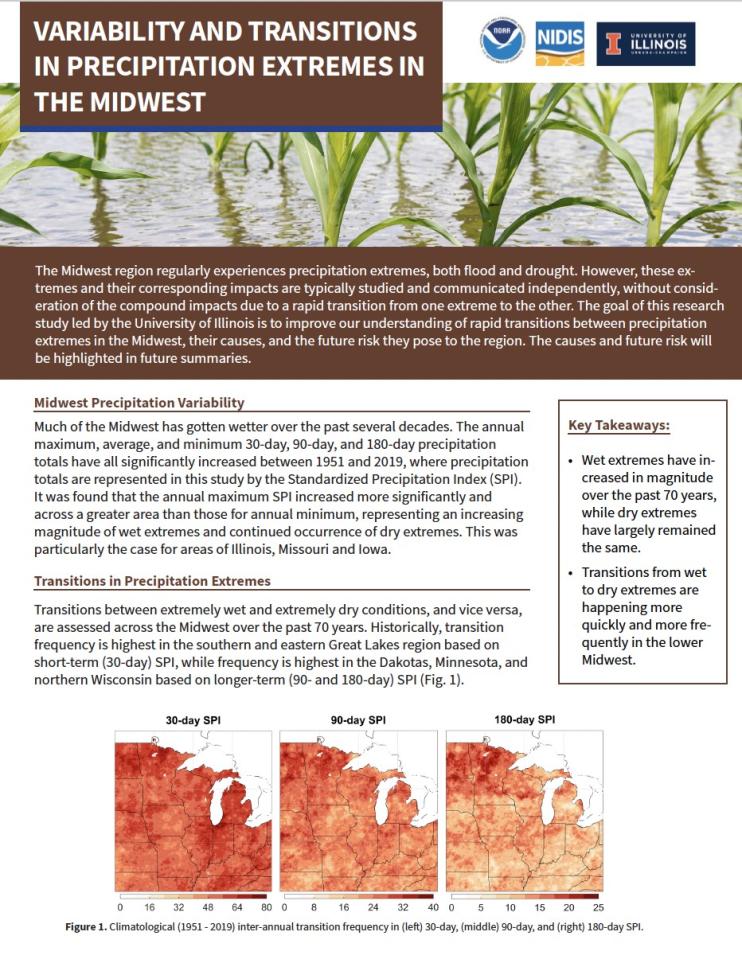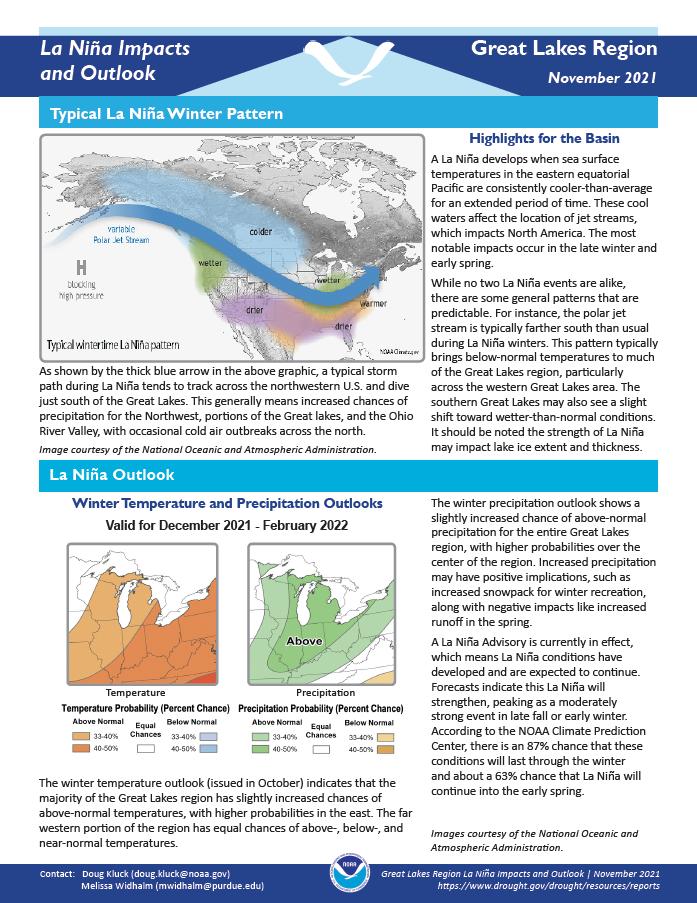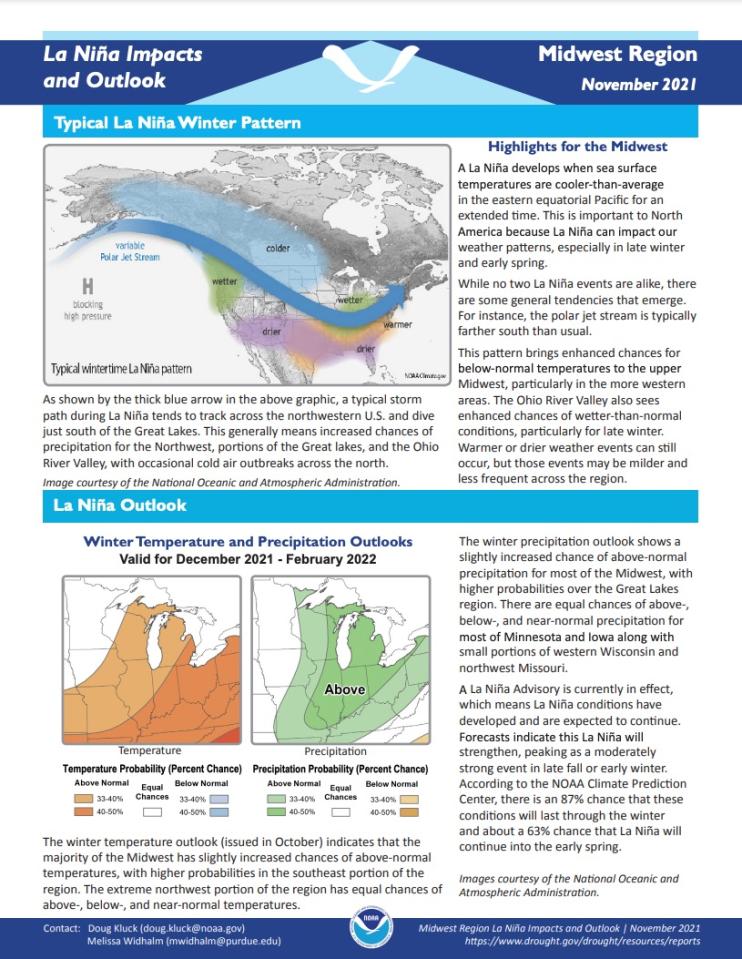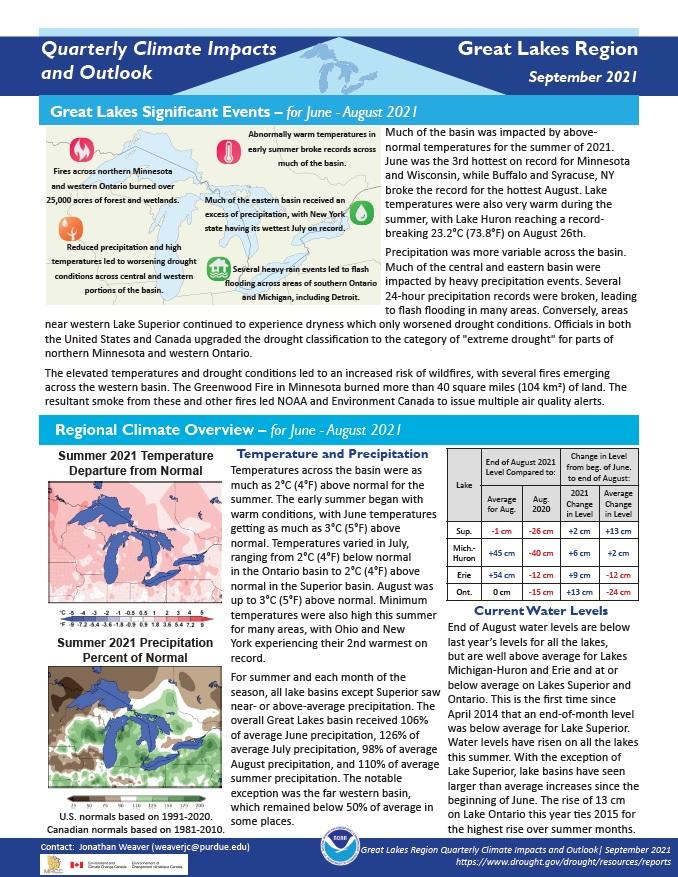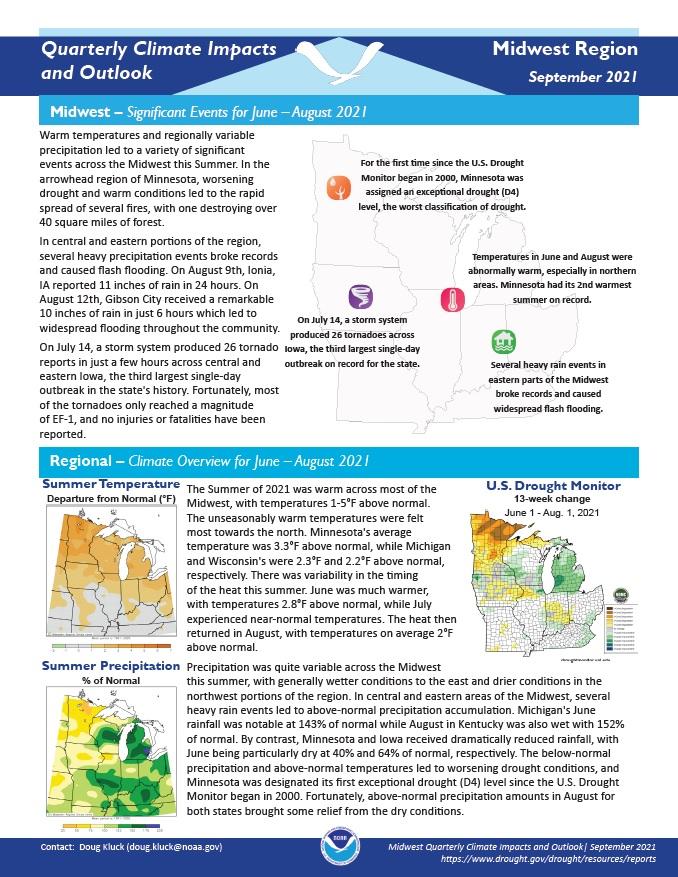The Midwest region has endured many droughts that have led to billion dollar losses, with examples over the last 30 years including 1980s, 2005, and 2012. Neither the onset or demise of the 2005 and 2012 droughts over the Midwest were forecast. The goal of this NIDIS-funded research study led by NOAA’s Physical Sciences Laboratory is to build a predictive understanding of drought and to quantify the risks of droughts with certain characteristics in the Midwest region.
Quarterly Climate Impacts and Outlook for the Great Lakes Region for September - November 2021. Dated December 2021.
Above-normal temperatures dominated the region throughout the fall. Precipitation was variable, with less moisture overall in the west than the east. Dryness in the western basin this fall continued a dry trend that has persisted in this area for over two years.
Quarterly Climate Impacts and Outlook for the Midwest Region for September - November 2021. Dated December 2021.
Above-normal temperatures prevailed across the Midwest during the fall. Average temperatures were 2.6°F above-normal, ranking the 6th warmest dating back to 1895. Although fall precipitation averaged near-normal for the Midwest as a whole, it was highly variable by region and by month.
Quarterly Climate Impacts and Outlook for the Missouri River Basin September - November 2021. Dated December 2021.
Temperatures remained much above normal across the entire Missouri River Basin. These above normal temperatures resulted in all the states within the Missouri River Basin ranking in the top 10 warmest falls on record. Precipitation this fall varied with most of the region observing below normal precipitation aside from the Northeast and Kansas.
The Midwest region regularly experiences precipitation extremes, both flood and drought. However, these extremes and their corresponding impacts are typically studied and communicated independently, without consideration of the compound impacts due to a rapid transition from one extreme to the other.
This handout provides information on the typical La Niña winter pattern; the La Niña outlook; potential winter and spring impacts; and comparisons of conditions during previous La Niña years for the Great Lakes region. Updated November 2021.
NOAA’s Regional Climate Services Program created these Outlooks to inform the public about climate impacts within their respective regions. Each regional report contains easy-to-understand language, and anyone can access them through the Drought Portal.
This handout provides information on the typical La Niña winter pattern; the La Niña outlook; potential impacts; and comparisons of conditions during previous La Niña years for the Midwest U.S. Updated November 2021.
NOAA’s Regional Climate Services Program created these outlooks to inform the public about climate impacts within their respective regions. Each regional report contains easy-to-understand language, and anyone can access them through the Drought Portal.
Quarterly Climate Impacts and Outlook for the Great Lakes Region for June - August 2021. Dated September 2021.
Temperatures across the basin were as much as 2°C (4°F) above normal for the summer. For summer and each month of the season, all lake basins except Superior saw near- or above-average precipitation.
Quarterly Climate Impacts and Outlook for the Midwest Region for June - August 2021. Dated September 2021.
The Summer of 2021 was warm across most of the Midwest, with temperatures 1-5°F above normal. The unseasonably warm temperatures were felt most towards the north. Precipitation was quite variable across the Midwest this summer, with generally wetter conditions to the east and drier conditions in the northwest portions of the region. In central and eastern areas of the Midwest, several heavy rain events led to above-normal precipitation accumulation.
Quarterly Climate Impacts and Outlook for the Missouri River Basin June - August 2021. Dated September 2021.
Extreme heat and reduced precipitation in the region this summer had a major impact on crops, grasslands, and wildlife. Many states ranked in the top 10 warmest summers on record. Below normal precipitation was present this season for most of the region.

